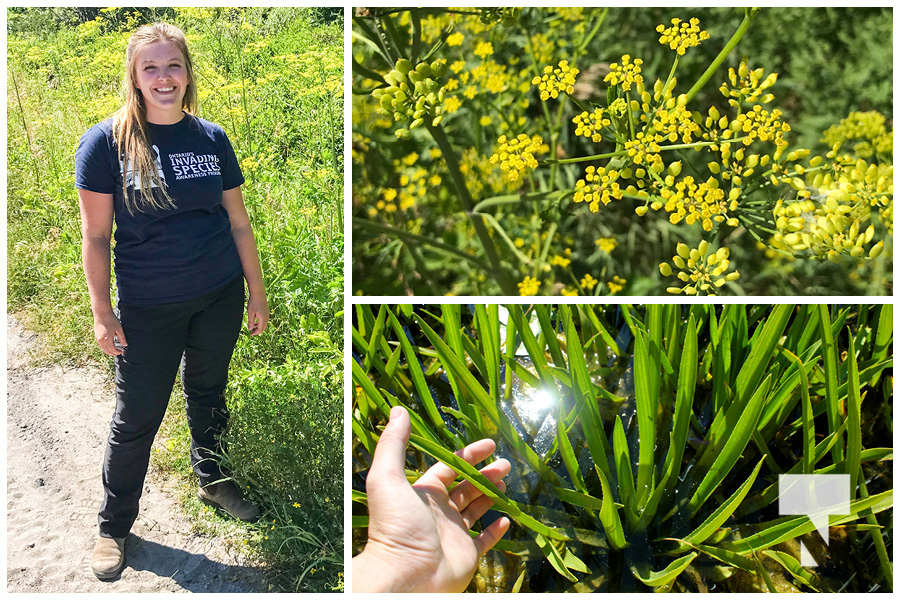Invasive species are a growing concern to the health and well-being of local plant and wild life. Lower Trent Conservation, in partnership with the Ontario Federation of Anglers and Hunters (OFAH), through Ontario’s Invading Species Awareness Program, is encouraging the public to be aware of the implications of invasive species and know how they can help stop the spread of troublesome non-natives.
Invasive species arrive, often accidentally, from other parts of the world, and in the absence of natural predators, can destroy, crowd out or otherwise distress native species and the delicate ecosystems in which they live. Possible introduction pathways of invasive species include:
- Off-road vehicles (like ATV’s)
- Aquarium and water gardens
- Ballast water from ships
- Gardening and landscaping
- Movement of live fish and bait
- Transport of raw wood and other forest products
“Water soldier is one example of an invasive species wreaking havoc in the Trent River. It is an aquatic plant that resembles the leafy top part of a pineapple floating in the water. Water soldier grows in thick floating mats, shading other aquatic vegetation and impeding boat navigation,” says Anne Anderson, Community Outreach and Special Projects Manager for Lower Trent Conservation. “It was first observed in the Trent River in the fall of 2008. Efforts are ongoing to eradicate existing water soldier growth and prevent its spread into the Bay of Quinte and Lake Ontario.”
Some other invasive plant species found in the Lower Trent watershed include Wild Parsnip, Dog Strangling Vine, Phragmites (European Common Reed), and Common Buckthorn trees. Notable aquatic invaders include Round Goby, Rusty Crayfish, and Zebra Mussels.
So what can you do to help? Unfortunately, invasive species can be extremely difficult to eliminate…so preventing them from introduction is key.
Here are a few tips:
- Garden with native plants.
- Don’t transport firewood. Buy it locally.
- Don’t empty fishing bait in or near water – it’s against the law.
- When boating, practice the ‘Clean & Drain & Dry’ rule.
- When hiking, clean visible mud, plants and seeds from your boots and other equipment.
- Don’t take plants, plant parts, seeds or fruit across borders.
- Don’t release pets into the wild.
Report invasive species you see to the Invasive Species Hotline at 1-800-563-7711 or get the Electronic Early Detection (EDD) Maps Ontario app.
Locally, the ‘Invading Species Hit Squad’ delivers on the ground, community based invasive species education, awareness and monitoring initiatives. Lower Trent Conservation and the OFAH have hired Environmental Science post-secondary student Anabelle Lamothe to attend local festivals and events, deliver educational programming to the public, and monitor local areas for invasive species.
According to Ontario’s Invading Species Awareness Program, non-native plants and animals not only threaten to transform our wildlife, woodlands and waterways, they also cost Canadian tax payers billions of dollars in losses to forestry, agriculture, fisheries and other industries affected by their impact.
For more information contact Lower Trent Conservation at 613-394-4829, or visit www.LTC.on.ca.
Photo Grid Attached
Left frame: Anabelle Lamothe, Invasive Species Community Outreach Liaison standing beside a patch of Wild Parsnip
Top right frame: Close-up of Wild Parsnip growth found along roadside shoulder
Bottom right frame: Close-up of Water Soldier growth in the Trent River























